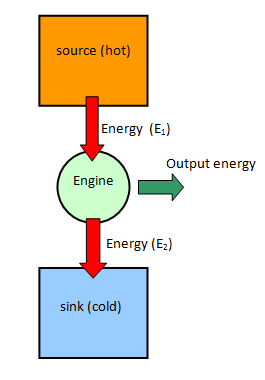By Jean-Jacques DeLisle, contributing writer
As with many branches of physics and engineering, a common point of debate and research is: Under what conditions do the classical laws and theories of physics break down and quantum theories are needed to answer the emerging questions? This is no different with thermodynamics, with scientists exploring these boundaries. Like many other areas of quantum physics research, new findings often provide more questions even as they reveal answers. Moreover, these new theories and discoveries may indicate aspects of how the physical phenomenon operates, but may be years, or decades, away from being truly understood.
An example of this is a recently published article, “Experimental Demonstration of Quantum Effects in the Operation of Microscopic Heat Engines,” wherein researchers at Cornell University measured output powers that reportedly exceeded the stochastic bound by four standard deviations, with output power decreasing below the bound as coherence was reduced.

Heat engines extract useful energy from temperature differences, subject to limits set by the second law of thermodynamics. But in the quantum world, the rules are different.
“Recently, it was predicted that, in the limit of small action with respect to ℏ, the presence coherence would result in the thermodynamic equivalence of different quantum heat engine types; moreover, it would allow for a greater power output than a classical heat engine using the same resources,” the paper reads. “Here, we implement two types of quantum heat engines by use of an ensemble of nitrogen-vacancy centers in diamond and experimentally demonstrate these quantum thermodynamic signatures for the first time.”
Though these findings have yet to be peer-reviewed, quantum physicists, such as Janet Anders from Exeter University in the U.K., suggest that they could prove groundbreaking. “It seems to be a magic fuel,” said Anders. “Not so much adding energy, but enabling the engine to extract energy faster. Theoretical physicists will need to examine just how it does this.”
Though classical thermodynamics went relatively unquestioned for many decades since its inception, recent advances in physical measurement technologies and quantum physics research have enabled more advanced testing and actual experimentation. This has led to a growth in quantum thermodynamics research. Where once there were only a few such scientists, more scientists have been exploring quantum thermodynamics for the potential of developing enabling new technologies. “The field is moving so fast, I can barely keep up,” said Ronnie Kosloff, an early pioneer of the field at the Hebrew University of Jerusalem in Israel.
This may also be very timely research, as the microelectronics industry produces semiconductors and physical devices and traces, which may no longer be accurately described by classical thermodynamics. Though issues with increasingly thinner layer dimensions , and extremely thin metal traces , could become preventative issues with the latest microelectronics, beyond even the general problem of keeping these transistors within optimal temperatures. It is likely that many more quantum thermodynamic discoveries will emerge in the near future, hopefully with some able to provide new solutions to many of the emerging problems inherent with upcoming quantum technologies.
Advertisement
Learn more about Electronic Products Magazine





